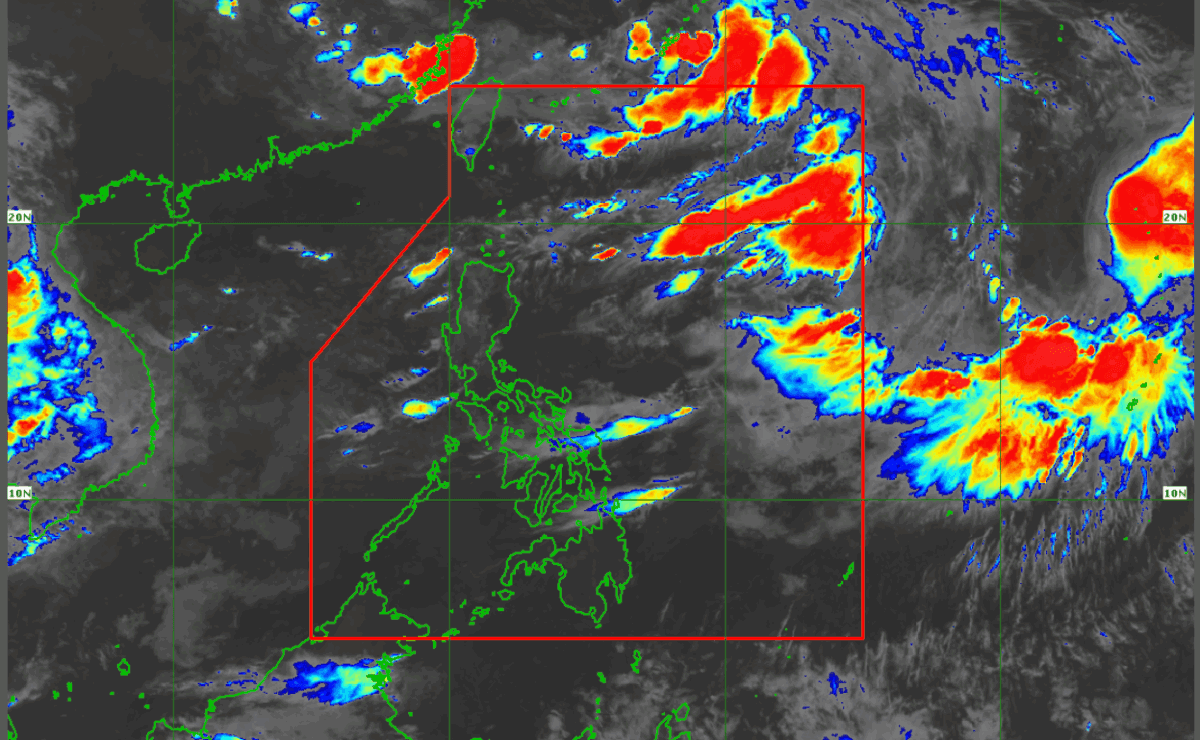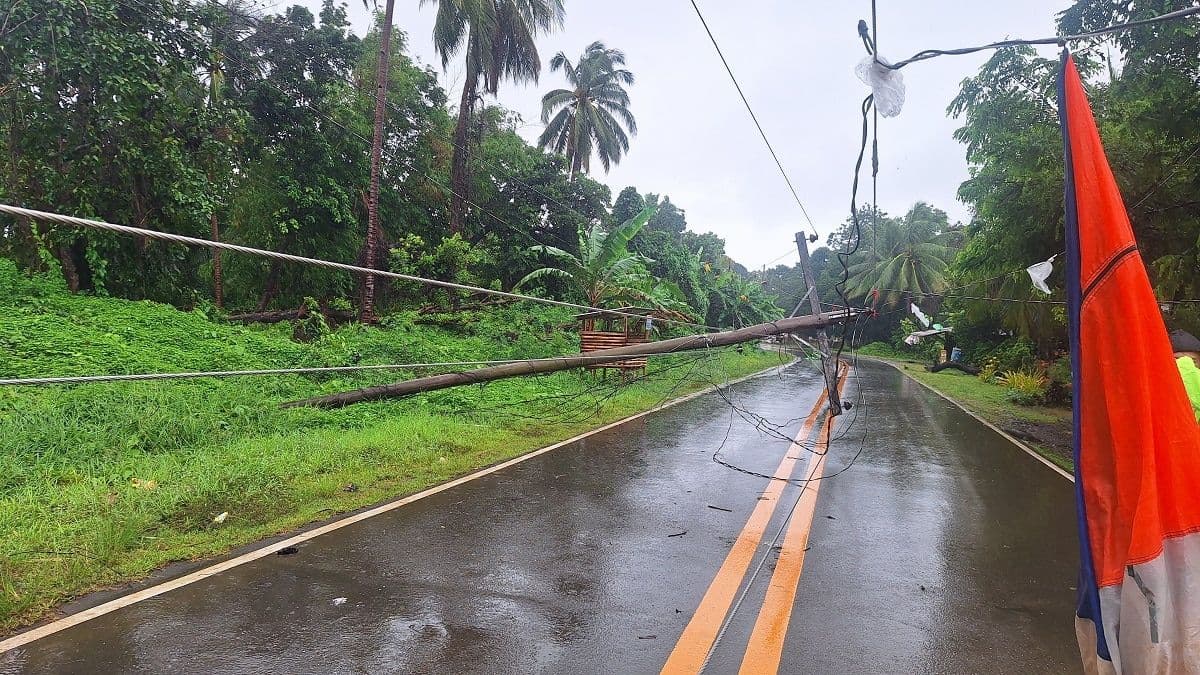Navigating the Tempest: Crising's Intensifying Path and Archipelago-Wide Weather Realities
Philippines weather today: Delve into Tropical Storm Crising's intensifying path across Luzon and simultaneous heavy rain alerts for Cebu. Essential updates.
Crising's Current Bearing: An Intensifying Threat
The Philippine archipelago finds itself once again under the watchful eye of a developing weather system, as Tropical Depression Crising has rapidly intensified into a tropical storm, now known internationally as . This significant upgrade occurred early Friday morning, prompting immediate concerns across northern . As of the 5:00 a.m. update from the on July 18, the storm's core was located approximately 335 kilometers east of , or about 325 kilometers east of , . Crising is currently packing maximum sustained winds of 65 kilometers per hour (kph) near its center, with gusts reaching up to 80 kph. Its northwestward trajectory at a speed of 20 kph suggests a steady approach, and Pagasa forecasts indicate a continued intensification, with Crising expected to reach severe tropical storm category by Saturday morning or afternoon. This escalating strength underscores the urgency for residents in its path to prepare for increasingly adverse conditions, setting the stage for significant weather impacts in the coming hours.
Under the Signals: Areas Brace for Impact
With Crising's intensification, has elevated Tropical Cyclone Wind Signal (TCWS) No. 2 over eight key areas in northern , signaling the immediate threat of strong winds and heavy rainfall. These regions include , (including the Babuyan Islands), northern and eastern (specifically Palanan, Ilagan City, Divilacan, Delfin Albano, Quezon, Tumauini, Maconacon, Santa Maria, Cabagan, San Pablo, Santo Tomas, San Mariano, Dinapigue), , northern , northern , , and the northern portion of . Beyond these areas, TCWS No. 1 remains hoisted over a broader swathe of Luzon, encompassing the rest of Isabela, Quirino, Nueva Vizcaya, the remainder of Kalinga, Mountain Province, Ifugao, the rest of Abra, Benguet, the rest of Ilocos Sur, La Union, northern , and northern . These signals are not just meteorological classifications; they are critical warnings for communities to initiate preparedness measures, secure property, and stay updated on local advisvisories, as the storm's direct influence promises disruptive weather across these listed provinces.
Beyond Luzon's Grasp: Cebu's Separate Rain Challenge
While the northern part of the country battened down the hatches for Tropical Storm Crising, the weather narrative across the is far from monolithic. Indeed, the archipelagic nature of the nation means that a single storm's direct impact often coexists with other, distinct weather phenomena in seemingly distant regions. A prime example is , located in the central Visayas, which is bracing for its own bout of heavier rains this Friday. Notably, these expected downpours in Cebu are not directly attributed to Tropical Storm Crising, which is focused on Luzon. Instead, meteorologists anticipate these rains from separate weather systems, likely the enhanced southwest monsoon or localized thunderstorms, which are common during this time of year. This highlights a crucial aspect of Philippine weather: preparedness isn't just about tracking one major storm. It's about understanding the localized and concurrent weather challenges that can affect different islands independently, demanding a broader, more adaptive approach to daily weather readiness and disaster mitigation across the entire nation.
Disruptions and Readiness: Adapting to the Storm
The immediate impact of Crising's presence, coupled with prevailing weather conditions across the archipelago, has already led to significant disruptions, particularly in sea travel. Numerous sea trips have been cancelled across various ports due to the inclement weather, a standard precautionary measure by the and to ensure public safety. This ripple effect on transportation underscores the broader challenge of adapting to dynamic weather patterns. Government agencies, from disaster risk reduction councils to local government units, are on heightened alert, coordinating efforts to prepare for potential flooding, landslides, and strong winds. Their readiness extends beyond the immediate storm path, encompassing areas like , which, despite being geographically distant from Crising's core, still faces its own severe rain challenges. This comprehensive state of alert exemplifies the multi-layered approach required in a country frequently visited by tropical cyclones and subject to varied regional weather phenomena, emphasizing that preparedness is a continuous, integrated effort rather than a reactive response to a single event.
Forecasting Beyond Crising: What Lies Ahead
Even as Tropical Storm Crising continues its northwestward trajectory and is steadily moving away from the , the meteorological landscape for the country remains dynamic. 's forecast indicates Crising's continued intensification before it exits, but what happens after its departure? The very nature of an archipelagic nation dictates that weather vigilance must extend beyond a single storm's immediate lifespan. While Crising may soon be a memory, the southwest monsoon, often a significant rain-bringer, could persist or strengthen, continuing to affect areas not directly hit by the tropical storm. Residents, particularly in regions like that face independent rain challenges, must maintain their readiness. The broader outlook for the coming days and weeks involves constant monitoring of potential new low-pressure areas, the behavior of the monsoon, and localized weather disturbances. This ongoing cycle demands that Filipinos cultivate a proactive, adaptive mindset towards weather preparedness, recognizing that the skies above this island nation are always busy, and a clear day can quickly give way to new and distinct weather challenges.
Related Articles

Philippine Skies Under Siege: Decoding the Double Whammy of Tropical Storms and Monsoon Rains

Philippine Skies Under Siege: Decoding the Double Whammy of Tropical Storms and Monsoon Rains

Beyond the Daily Bulletin: Decoding the Philippines' Shifting Skies

Beyond the Daily Bulletin: Decoding the Philippines' Shifting Skies

Weathering the Storm: Unpacking Resilience in a Deluge-Prone Nation

Weathering the Storm: Unpacking Resilience in a Deluge-Prone Nation

Unseen Waters Rising: Navigating the Philippines' Red Rainfall Warnings
